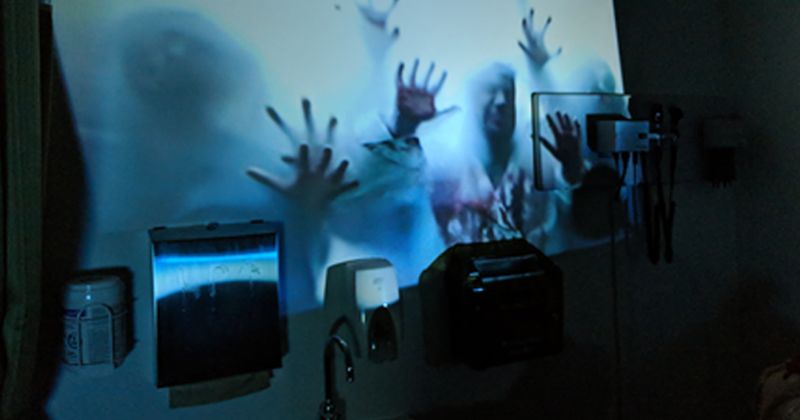Pandemic-themed escape room improves infection control adherence among hospital staff
Click Here to Manage Email Alerts
A pandemic-themed escape room increased staff adherence to infection prevention and control measures in a Texas health care system, researchers reported at the Association for Professionals in Infection Control and Epidemiology meeting.



Gracia Boseman, MPH, RN, a nurse in the Central Texas Veterans Health Care System, and Kristy Causey, MSN-Ed, RN, devised the escape room 3 years before the COVID-19 pandemic thrust the issue of infection prevention and control into the national spotlight.
“In 2017, efforts to promote hand hygiene and other basic infection control principles — combined with the intent to boost staff participation — led to a need for more engaging and immersive learning experiences. At the time, social escape rooms and zombie-theme shows were becoming viral sensations,” Boseman told Healio.
They launched the first escape room in 2017 and repeated the experiment in 2018 and 2019. The theme of the room was a pandemic caused by a novel influenza virus. Participants were asked to select appropriate personal protective equipment (PPE) for novel influenza before entering the room.
Once inside, participants were given a short amount of time to work as a team to find clues, as is typical with escape rooms. They also were asked to demonstrate at least three infection control principles, explain how environmental surfaces play a role in disease transmission, and hypothesize how their role would change during a pandemic a task that was added after researchers received feedback how this scenario would “likely never happen.”
Additionally, unlike traditional escape rooms, participants had to overcome additional obstacles, including time penalties for incorrect actions, which reflected the interruption that could be caused in real-life patient care when wrong actions are taken.
Overall, the researchers said the escape room was well received and effective. They saw an increase in nonmandatory learner participation from an average of 20 to 30 attendees to approximately 200 attendees per training, resulting in better communication and team collaboration both of which are key for escaping the room in time.
Three months after the escape room, surveys sent to participants assessed behavioral changes. According to the researchers, participants self-reported a 61% increase in hand-washing, 23% increase in environmental awareness of how contaminated surfaces play a role in disease transmission and a 21% increase in the use of PPE.
The survey also revealed that 9% of administrative staff reported no changes to their current practice because “they are administrative,” which the researchers said emphasizes the need to include nonclinical employees in education and highlights the importance that everyone has a role to play in infection prevention and control.
Because of the COVID-19 pandemic, 2020 escape rooms were canceled. However, throughout the pandemic, hospital employees who had attended the trainings were more actively engaged in preparation for the pandemic.
“Simulation and innovative learning methods can significantly contribute to preventing the spread of germs throughout the hospital setting. Employees become more engaged in learning when we pique their interest,” Causey said. “Making education enjoyable does not detract from its value. Learning can be fun and still positively impact patient outcomes.”
According to Boseman and Causey, Central Texas Veterans Health Care System has six escape rooms designed for all employees, Boseman and Causey said.

